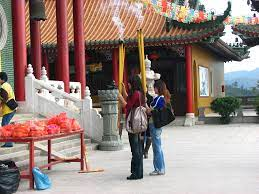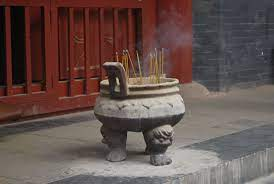"Burning Incense Brings Protection" is a traditional Chinese belief, where people hope to convey their wishes to the gods through devout worship, entrusting their hopes to the rising incense smoke for blessings. However, increasing research reveals that during the incense burning process, harmful substances that can affect human health and the environment are inhaled, warranting caution!
A professor from the Institute of Toxicology at the National Taiwan University College of Medicine pointed out that the suspended particles (PM2.5) produced by burning incense contain heavy metals like formaldehyde and acetaldehyde, which may induce cardiovascular diseases, asthma, and even exacerbate chronic respiratory diseases. Additionally, the increased carbon dioxide from burning incense contributes to the greenhouse effect. According to research from the National University of Singapore, individuals long exposed to incense smoke have a 19% higher risk of death from stroke and more than a 10% higher mortality risk from cardiovascular diseases.
During the incense burning process, harmful factors to human health and the environment can be inhaled, so caution is needed! Image provided by Flickr.
Furthermore, a study from Academia Sinica in Taiwan highlighted the impact of incense exposure during pregnancy on infants. It was found that if women are highly exposed to incense smoke during pregnancy, the head circumference of newborns may be smaller than average, affecting normal brain development. "Burning incense indoors not only fails to achieve a calming effect but also causes significant harm to the body due to suspended particles and carcinogens like polycyclic aromatic hydrocarbons," the professor suggested. He recommended using electronic incense or worshipping with clasped hands as better alternatives to traditional incense burning.

cardiovascular diseases. Image provided by Public Domain picture.
Famous temples in Taiwan, such as Longshan Temple and Hsing Tian Kong, are leading the way in reducing incense burning, indicating that faith does not need to adhere to traditional forms. Sincerity alone can bring efficacy, meeting modern health needs while considering environmental protection, pollution reduction, and fire safety. However, many still believe that burning incense is essential for blessings. Thus, some companies have introduced smokeless purification incense lamps, using water vapor to create pollution-free smoke for offering prayers to the gods. This aims to replace traditional incense burning, filling temple halls with fragrance without fire, and introducing a new concept of smokeless worship into daily life. Moreover, adding essential oils can transform the temple hall into a calming aromatherapy space, helping people relax, avoiding the irritation and discomfort from indoor incense burning, and protecting home decor and furnishings, resulting in cleaner air.







